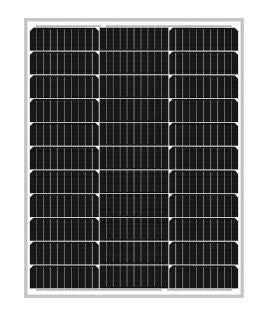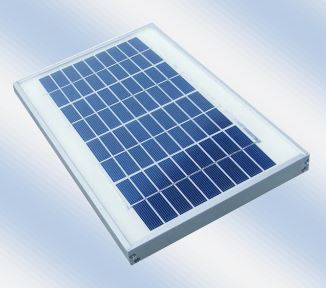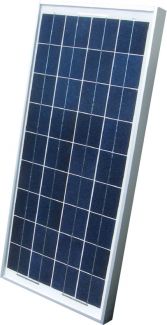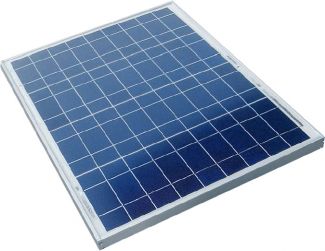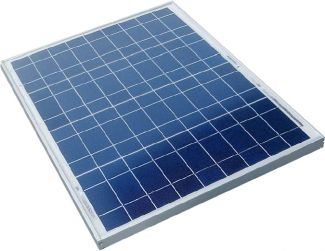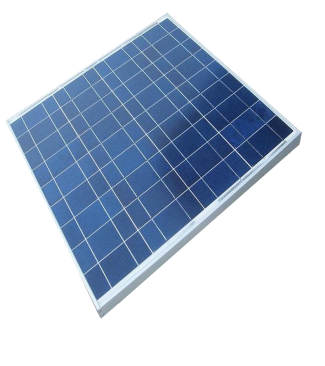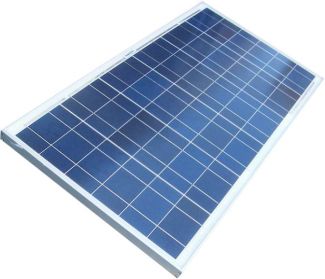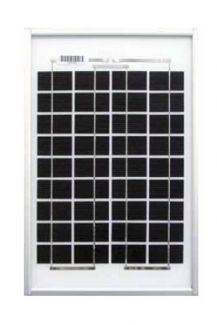Solar Home Grid-Tie System Sizing Part 3: Small System Economics

In part three of this series we are now going to look at a grid tie system based on a small budget instead of roof space or total energy off-set. Even a solar array that won't off-set all of your usage will pay for itself fairly quickly while saving money on your electric bill each month, and can be expanded in the future as well.
In this example, I'm using the parts list detailed below, which, aside from some site specific wire runs is a fairly complete package for a roof mounted grid-tie system.
6 - Peimar 310W Black Solar Panels
1 - SMA SunnyBoy 3000W Grid Tie Inverter W/SPS
1 - 30 Ft MC4 Solar Panel Cable Extension Wire
1 - Roof Top Junction Box / Combiner Box
1 - SnapNRack Roof Mounting System (4 - 122 Inch Black Rails / 2 - Rail Splice Bars / 10 - Black Mid Clamps / 4 - End Clamps / 4 - Black Rail End Caps / 8 - Black Mounting Feet w/Flashing for Comp Shingle Roof / 8 - Lag Bolts / 1 - Rail Grounding Lug)
In this example, I'm using the parts list detailed below, which, aside from some site specific wire runs is a fairly complete package for a roof mounted grid-tie system.
6 - Peimar 310W Black Solar Panels
1 - SMA SunnyBoy 3000W Grid Tie Inverter W/SPS
1 - 30 Ft MC4 Solar Panel Cable Extension Wire
1 - Roof Top Junction Box / Combiner Box
1 - SnapNRack Roof Mounting System (4 - 122 Inch Black Rails / 2 - Rail Splice Bars / 10 - Black Mid Clamps / 4 - End Clamps / 4 - Black Rail End Caps / 8 - Black Mounting Feet w/Flashing for Comp Shingle Roof / 8 - Lag Bolts / 1 - Rail Grounding Lug)
This package would come in at 1.86 kW (1,860 W) and cost $3,000 or less depending on some of the specific components.
It's important to make sure that under different conditions an array this small will still work well with the inverter we are using, which is obviously over-sized in comparison to the array. Many inverter manufacturers offer "String Sizing" tools on their website, I also personally like to use the MidNite Classic string sizing tool just for the data it provides to double check with the inverter specs in all different kinds of systems, it's handy as I can get the following results for this particular set-up quickly.
Array Specs:
Number of Panels In Series: 6
Number of Parallel Strings: 1
Total Modules: 6
Rated PV Array Power: 1860 Watts
Anticipated Array Power @ 104 F: 1748 Watts
Rated PV Array Current: 9.51 Amps
VMP (Maximum Power Point Voltage): 195.6 Volts
VOC (Open Circuit Voltage): 244.2 Volts
VMP @ -22 F: 238.8 Volts
VOC @ -22 F: 287.4 Volts
SunnyBoy 3.0 Inverter Specs:
Max. usable DC power: 3100 W
Max. DC voltage: 600 V
Rated MPP voltage range: 155 - 480 V
MPPT operating voltage range: 100 – 550 V
Min. DC voltage / start voltage: 100 V / 125 V
Max. operating input current per MPPT: 10 A Max.
Short circuit current per MPPT: 18 A
For small systems like this, micro-inverters like Enphase Products are also a great choice, and you really don't need to worry about any of these little details as each solar panel uses it's own inverter, so a single panel system could even be taken into consideration.
I used the SMA SunnyBoy for this kit for a few reasons though. First, it's a great product and this system could be added to in the future without much additional cost per watt, which will keep the payback time nice and low. Another thing I really like about the SMA SunnyBoy line is a unique feature known as SPS, or Secure Power Supply. This feature allows a home owner to dedicate their array power to a dedicated outlet which provides up to 2000 W of power depending on the conditions, with this particular array you'd probably expect around 1800 Watts of available power given good solar panel orientation and sunlight - without requiring a battery bank, charge controllers or other hybrid system components.
As a side note, this SPS feature could be used to charge a battery bank for emergency use using a lower cost standard battery charger and low cost inverter, because not everybody really needs the best of the best for a quick black out scenario, and these types of systems can also be fairly cost prohibitive if you're on a tight budget.
Going back to the simple payback methods described in the last blog post, I'll be using PV Watts to calculate the predicted system payback time. Here are the specs I'm using for PV Watts:
As a side note, this SPS feature could be used to charge a battery bank for emergency use using a lower cost standard battery charger and low cost inverter, because not everybody really needs the best of the best for a quick black out scenario, and these types of systems can also be fairly cost prohibitive if you're on a tight budget.
Going back to the simple payback methods described in the last blog post, I'll be using PV Watts to calculate the predicted system payback time. Here are the specs I'm using for PV Watts:
System Info:
DC System Size (kW): 1.860
Module Type: Premium
Array Type: Fixed Roof Mount
System Losses (%): 14.08 (Default Loss Calculations)
Tilt (deg): 26.57 (6:12 Roof Pitch, See last blog post for a roof pitch to degrees chart)
Azumuth (Deg): 180
NOTE: So far, my favorite online tool to use for determining azimuth angles is provided by Solmetric at the link below, it's a free tool but an account sign-up is required. Link: Roof Azimuth Tool
Retail Electricity Rate:
Rate Type: Residential
Rate ($/kWh): 0.11
Retail Electricity Rate:
Rate Type: Residential
Rate ($/kWh): 0.11
PV Watts Results:
Annual Output: 3,005 kWh/Year* (System output may range from 2,881 to 3,080 kWh per year near this location.)
Annual Average Daily Solar Radiation: 5.72 Hours
Annual Energy Value: $330.00
If we look at the most simple payback method of the original package cost divided by the annual energy value, we come up with 9.09 years to payback. Taking the Federal Residential Renewable Energy Tax Credit of 30% into consideration, that number drops down to 6.36 years. There could and usually are state, local, and utility rebates that Solar Grid-Tie systems would qualify for as well that would drop this even further! Check out the Database of State Incentives for Renewables & Efficiency
Thanks for reading, hopefully this inspires you to check into a system for your home, the sooner it's on the roof the sooner it's going to pay for itself! Our team is always here to help from designs to sale and into the future as a new friend of the solar crew!
Annual Average Daily Solar Radiation: 5.72 Hours
Annual Energy Value: $330.00
If we look at the most simple payback method of the original package cost divided by the annual energy value, we come up with 9.09 years to payback. Taking the Federal Residential Renewable Energy Tax Credit of 30% into consideration, that number drops down to 6.36 years. There could and usually are state, local, and utility rebates that Solar Grid-Tie systems would qualify for as well that would drop this even further! Check out the Database of State Incentives for Renewables & Efficiency
Thanks for reading, hopefully this inspires you to check into a system for your home, the sooner it's on the roof the sooner it's going to pay for itself! Our team is always here to help from designs to sale and into the future as a new friend of the solar crew!
- Loren Geist

